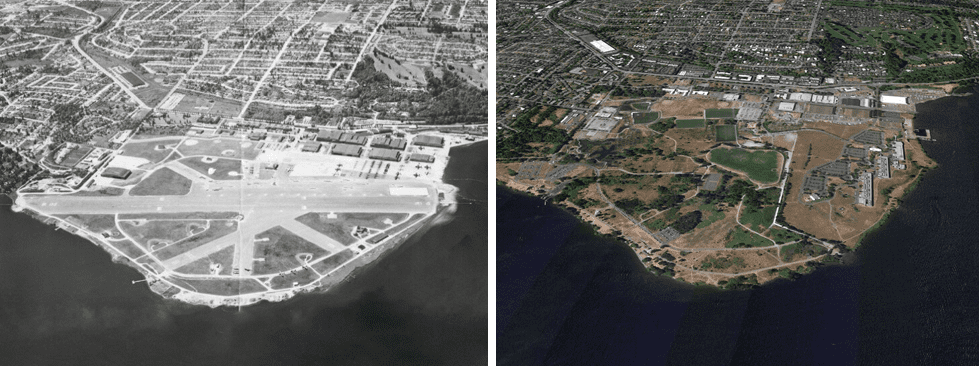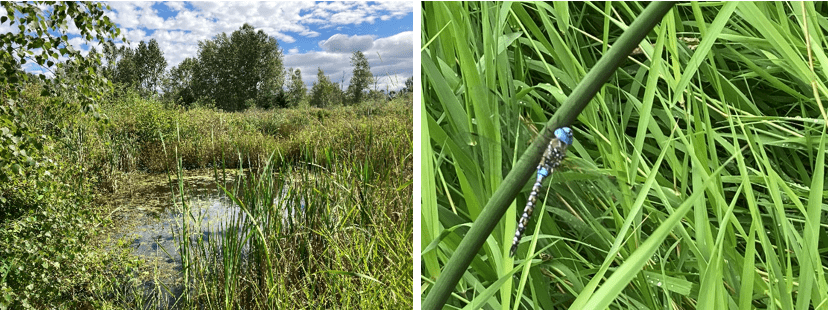
By Todd Burley
Did you know that the extensive wetlands at Magnuson Park were created just 15 years ago? When taking a stroll through this lush and varied habitat, it is hard to believe that once these saturated forests, ponds, and meadows were paved over with asphalt, part of the Sand Point Naval Air Station.
Historically, these lands included Douglas fir and alder forest and wetlands. When Lake Washington was lowered in 1916 the former “Mud Lake” and stream significantly dried up. This altered the habitat, but made it a great location for a new naval air base.
In 1920 the Navy took over the land and created a base of operations for their air fleet. The land was leveled with 1,500,000 cubic yards of soil and much of it was paved over. In 1970 the base was decommissioned, turning over 195.6 acres to the City in 1975 for a new park, initially called Sand Point Park. In 1977 it was renamed Warren G. Magnuson Park, after the Senator who advocated for the park’s creation. It was later expanded to a total of 350 acres and became Seattle’s second largest park.

A series of efforts had occurred to plan the park in the 1990’s and prior, but it wasn’t until 2001 that the plan developed by Seattle’s Berger Partnership was approved by City Council. An extensive wetland complex was key to the plan. After three years of legal challenges and process, the Master Plan was completed, and work began.
Guy Michaelsen, Principal at the Berger Partnership, was key to this plan and he recently met with our Senior Gardeners and a few other staff to give an overview of the wetlands, their history, and how we can steward them well.
The Magnuson Wetland Complex boasts 10 acres of newly engineered wetlands and four acres of restored wetland. They were officially developed to mitigate the impacts from the creation of the new athletic fields that were also part of the plan. The total system can detain over 5 million gallons of water underneath the synthetic sports fields and in ponds and wetlands, which helps reduce the amount of non-point source pollution entering Lake Washington from the surrounding neighborhoods and roads.
The wetlands at Magnuson Park do a great job of providing ecosystem services. One study found that the wetland complex “reduced total suspended solids by 94%, fecal coliform bacteria by 99%, and increases dissolved oxygen by 32% as stormwater runoff travels through wetlands, according to monitoring data.”
What else is special about the wetlands? Dennis Paulson, a dragonfly expert at the University of Washington, has counted 19 species of dragonflies in these wetlands, more species than in any other place in Seattle! The ponds are also home to Pacific Tree Frogs, whose larvae population has increased by 255%, due in large part to the natural processes altering some vernal ponds to be ideal habitat. The park is a hotspot for birds, too, with 222 species observed to date.
From an ecosystem perspective, it is easy to see that the Magnuson Park wetlands are a huge benefit to our community. From healthy habitat to Navy base, then back again to healthy habitat, Magnuson Park is a story of resilience, persistence, and adaptability of both humans and nature. What will the next 15 years bring? Go check it out yourself!
